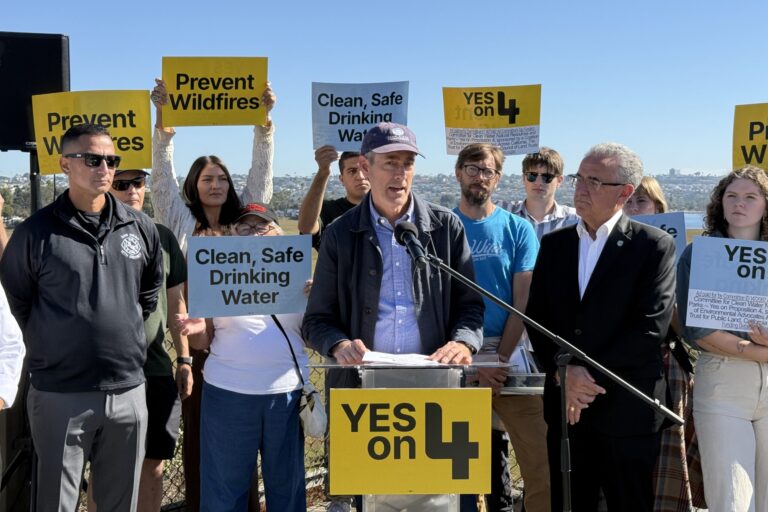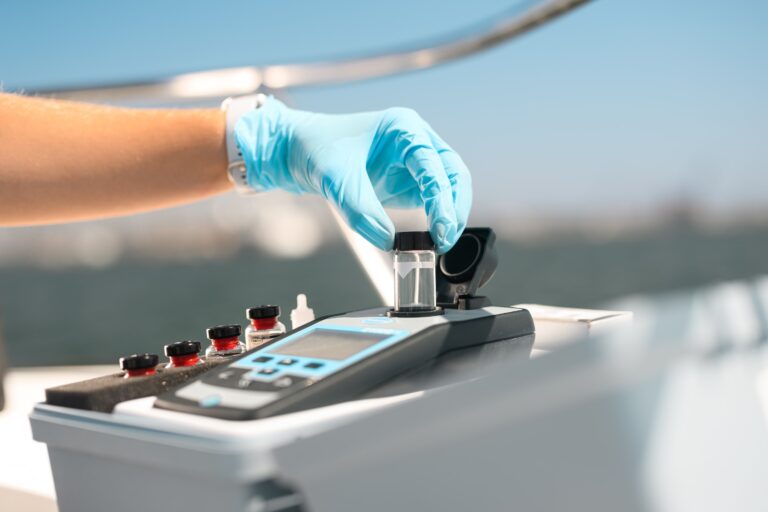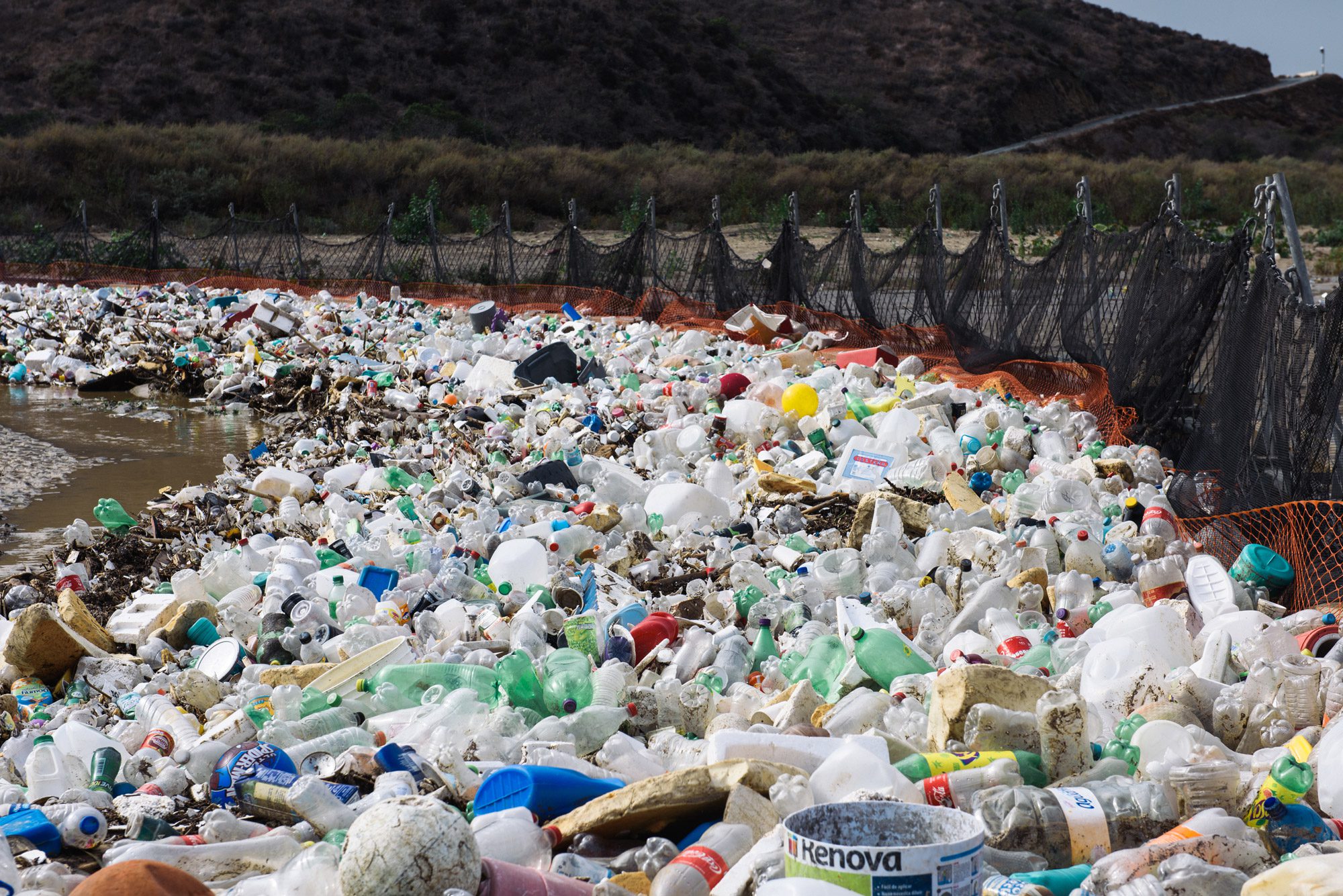Welcome back to our two part blog series on the Tijuana sewage crisis. In Part 1, we talked about the history, causes and impacts of the crisis, and how the ongoing failure to make progress has its roots in cross-border politics, funding and political neglect on both sides of the border.
Here in Part 2 we’ll focus on how local elected officials, community groups, clean water advocates like San Diego Coastkeeper and Surfrider, and local residents are joining forces to push for solutions and demand accountability and action to solve this crisis.
Government Response to the Crisis
Actions taken by the Federal Government
If you joined us for Part 1, you will recall that the International Boundary and Water Commission (IBWC) is an agency within the U.S. Department of State on the U.S. side, responsible for managing border infrastructure along the entire U.S./Mexico border. For the Tijuana River, that means the South Bay International Wastewater Treatment Plant and the four canyon collectors that are supposed to capture untreated flows from Tijuana and send them to the South Bay Plant for treatment. IBWC has a Clean Water Act permit from the San Diego Regional Water Board (Water Board), the state agency with the legal mandate to ensure that the South Bay Plant treats the sewage and toxic chemicals coming from Tijuana. It’s also critically important to note that the federal EPA also has authority over IBWC and the South Bay Plant, and can take independent enforcement action with or without the Water Board’s involvement. EPA also led the effort to develop the “Comprehensive Infrastructure Solution” (CIS), the overall plan for diverting and treating all transboundary pollution flows in the Tijuana River. Unfortunately there is not nearly enough funding to actually implement this solution. For funding, IBWC must go to Congress, and has a sorry history of underestimating or hiding the true cost of repairs to the South Bay Plant. This lack of transparency resulted in years of underfunding, neglected or ignored maintenance, and the current barely functional state of the South Bay Plant. In response to public pressure over the past year, IBWC now estimates it will need at least $1 billion, and likely much more, to fully repair and expand the South Bay Plant.


In response, local elected officials led by IB Mayor Paloma Aguirre made an all out effort to get Governor Newsom, President Biden and Congress’ attention in order to get more funding and more oversight of IBWC. Congressman Scott Peters, U.S. Senator Alex Padilla, and state legislators representing San Diego County all pitched in to push for more federal funding. President Biden finally responded by requesting $310 million in funding for IBWC, and in March 2024 they received $103 million in new funding. A fraction of what’s needed, but the fact that we collectively succeeded means we have to keep pushing, and keeping this issue in the news so that Congress cannot ignore it.
Mayor Aguirre and the growing coalition of elected and environmental advocates also asked Governor Newsom and President Biden to declare the Tijuana sewage crisis to be a state and federal disaster, in order to free up emergency federal funds and move more quickly to address what everyone living in San Diego and Tijuana knows is a slow moving catastrophe. To date, Governor Newsom has refused to support this request to President Biden, and the President has been silent on this issue. In 2023, Coastkeeper joined Surfrider, YMCA Camp Surf and others to form the Border Pollution Coalition and champion this request. If you agree with us that this is an emergency and a disaster, sign Surfrider’s petition to President Biden and help us keep the pressure on!
In October 2023, the California Coastal Commission (on which Mayor Aguirre serves as a Commissioner) engaged on the crisis, holding their monthly meeting in IB and devoting nearly a whole day to receiving testimony from local residents, public health and Tijuana estuary experts, Coastkeeper and the Border Pollution Coalition, sharing often gut wrenching testimony about the impacts of this pollution on their daily lives and the environment we all value so highly. The Commission has done its best to hold IBWC and EPA to account through information requests, monthly agenda updates and other ‘soft’ actions which at least increase the flow of information to the public, but it has limited legal authority to force more immediate action. The real power to change this dynamic lies with Congress and its funding power, IBWC and the State Department, and EPA with its broad federal authority to enforce the Clean Water Act. And of course with all of us, the general public and clean water advocates like Coastkeeper, Surfrider and YMCA Camp Surf. We have the power of grassroots if we can galvanize it, and now is the time we need grassroots support to keep the pressure on the agencies and elected officials who hold the key to solving this.


- Played a key role in securing $103 million in Congressional funding for repair of IBWC’s decrepit South Bay Treatment Plant, as part of the newly formed Border Pollution Coalition. At least $1 billion is needed from Congress just to rebuild the South Bay Plant, so our work is just beginning.
- Filed a Clean Water Act lawsuit against IBWC in April 2024 for over 500 violations of federal law at the South Bay Treatment Plant, leading to ongoing contamination of the Pacific Ocean and our local beaches
- Continuing to push for a federal emergency declaration from President Biden, through the Border Pollution Coalition and Surfrider’s Clean Border Water Now Campaign
- Joined Mayor Aguirre’s public health task force, to support SDSU and Scripps scientists’ work to assess the risk and impacts of transboundary air and water pollution on local communities, including IB, San Ysidro, and San Diego
- Putting a spotlight on the City and County of San Diego’s efforts to fix the flow of toxic raw sewage from Smuggler’s Gulch that has flooded new areas of the Tijuana River Valley, including the County Campground, with toxic pools of sewage and chemicals. IBWC is equally to blame – if not for its failure to fix the Gulch’s canyon collector, this sewage should have been pumped to the South Bay Plant for treatment. This flooding has exacerbated the horrible odor issues that are plaguing IB residents and degrading their health and well-being.
- Partnering with Tijuana Waterkeeper to raise awareness and build a “One Coast, One Community” shared perspective through which to tackle this crisis
- Supporting Senator Steve Padilla’s legislation, SB1178, to hold California companies operating in Tijuana accountable for their pollution of coastal waters
- Supporting AB2939, a state bill to allow outdoor education groups like Outdoor Outreach to take their kids to safe clean beaches without being blocked by bureaucratic permitting requirements. For kids in South County whose beaches have been closed for most of their lives, this is a critical step to ensuring they have equitable access to our beautiful coastal waters without risking their health.
Check out the work Coastkeeper and our partners and allies are doing to address this slow moving train wreck of a pollution crisis, and stay tuned for future actions and ways to get involved. We love our beaches in San Diego, it’s time we educate ourselves and advocate for their protection. It is crucial that San Diego county residents engage with community-led efforts in spreading awareness, petitioning for governmental aid/intervention, and cleaning up our beaches and waterways. Contact San Diego Coastkeeper today to learn how you can do your part in keeping San Diego beautiful and clean.

















